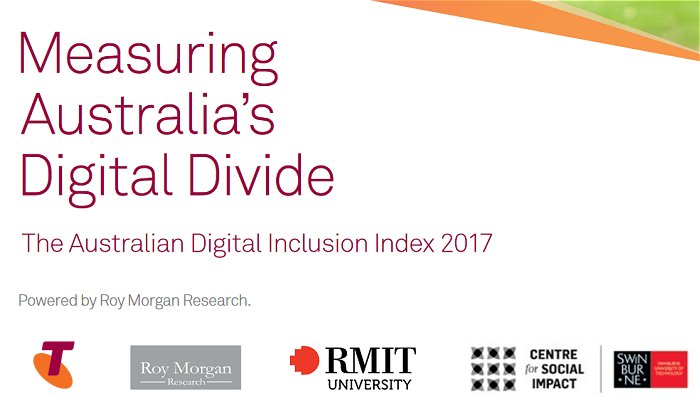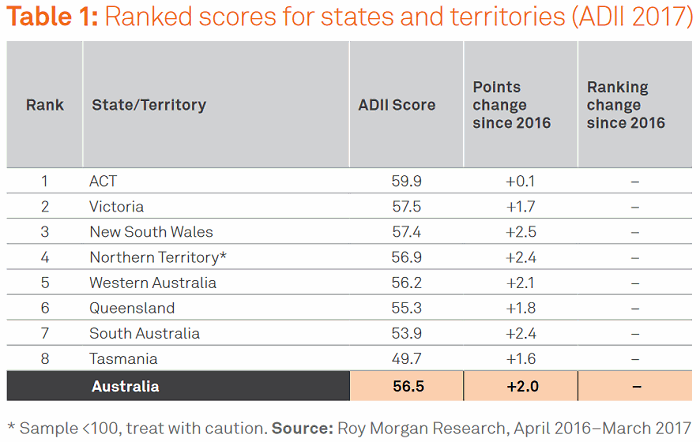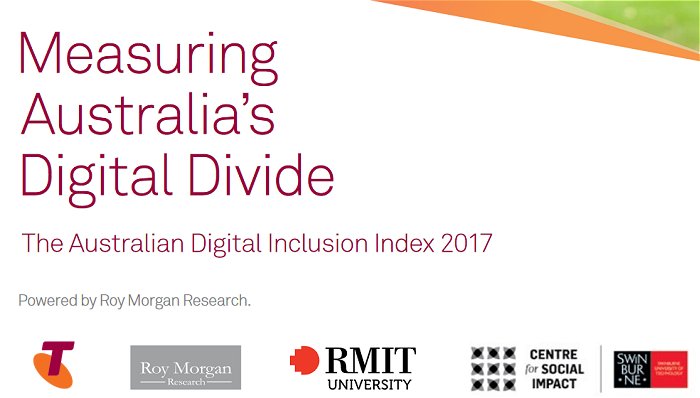The latest Australian Digital Inclusion Index (ADII) indicates Australians are accessing the internet more often, using an increasingly diverse range of technologies. However, the gaps between included and excluded are widening and affordability is an area for concern.

The ADII measures three important aspects of digital inclusion: Access, Affordability, and Digital Ability; and creates a score for each. The top theoretical score in each dimension is 100 and the three scores are averaged for the final overall score. A low score is considered below 45, a medium score is 50-60 and a high score is considered 65+.
The latest report shows Australia’s overall digital inclusion score has improved by 3.8 points since 2014, from 52.7 to 56.5.
Here's how each state ranked in the latest study, and the changes from 2016.

While overall scores are better, one dimension that has gone backwards compared to 2014 is affordability. According to the report, households are spending a larger proportion of their income on internet services; from 1% in 2014 to 1.19% in 2017. While the cost per gigabyte of data may be falling, Australians are consuming more of it through spending more time online and applications becoming more bandwidth-intensive.
" Thus, despite increasing value, Australia’s overall Affordability score has fallen. This trend is reason for concern, particularly for people on low incomes," state the authors.
Digital Ability (skills, online activities, and attitudes to digital technology ) has significantly improved since 2014, but it has risen from a low base and therefore remains an area requiring attention from policy makers, business, education, and community groups says the report.
Other highlights from the report:
- Australians aged 65+ are the nation's least digitally included age group, with a score of 42.9 - or 13.6 points below the Australian average of 56.5.
- One in five Australians access the internet only through a mobile device. Mobile-only users had a high degree of digital exclusion, scoring 42.3. This is well below the national average and places this group within the low score band.
- Australian women have an ADII score 2.0 points below the score for men.
- Other groups with lower than national average scores included Australians in low income households (41.1), people with a disability (47.0), those who didn't complete secondary school (47.4), indigenous Australians (49.5), people in country areas (50.7) and Australians not in paid employment (50.2).
- Around three million Australians are still not online.
The full Australian Digital Inclusion Index 2017 report can be downloaded here (PDF).



